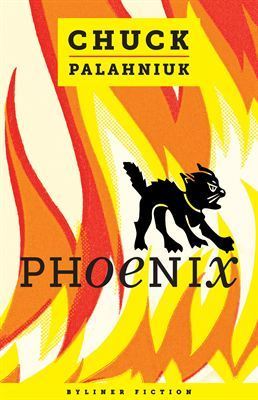Chuck Answers Fan Questions For His Second 'Phoenix' Essay
 On February 12th, Chuck Palahniuk released a new short story exclusively through Amazon's Kindle Single program called 'Phoenix.' At the time of my writing this, 'Phoenix' is #1 across the board on Amazon's Kindle Single rank. The story is burning it up! (pun intended)
On February 12th, Chuck Palahniuk released a new short story exclusively through Amazon's Kindle Single program called 'Phoenix.' At the time of my writing this, 'Phoenix' is #1 across the board on Amazon's Kindle Single rank. The story is burning it up! (pun intended)
So two weeks ago, Chuck decided to start a series of essays explaining the construction and backstory of this short story. (You can read Essay 1 here and Essay 2 here.) And he decided to let a small number of fans submit questions to him. So without further ado, here is the second batch of Questions & Answers. And it goes without saying, but if you haven't yet read 'Phoenix,' there are spoilers below.
(Chuck's answers are italicizied within)
From Andrew Stanton:
What is the significance of the phone ringing so many times? What is Ted doing that it takes him 26 rings to answer? And why does Rachel wait?
Also, a bit more random, but did Chuck get the idea for naming the cat Belinda Carlisle after the book, Frank Sinatra in a Blender, where Frank Sinatra is the name of a chiwawa?
Chuck's Response: Thank you, Andrew, for bringing this up. The telephone ringing is Rachel’s particular way to measure time passing. She’s so meticulous that it makes sense for her to count the rings as her impatience builds. She’s thwarted with every unanswered ring, and it’s easy for her to imagine that Ted’s intentionally avoiding her calls. By stating that she’s waited 27 rings I’m already creating tension in the scene and depicting Rachel’s anxious state of mind – as well as giving some idea of how much time is passing.
Sorry, I haven’t read Frank Sinatra in a Blender. It was Lidia Yuknavitch’s memoir The Chronology of Water that introduced me to the idea of using celebrity names for characters. She uses rock star names to represent each of her former lovers, and the technique works to establish the era as well as the person. Yes, it’s a shortcut, but it’s unique and works especially well in a short story where I don’t want to burden the reader with pages of description. read more »



